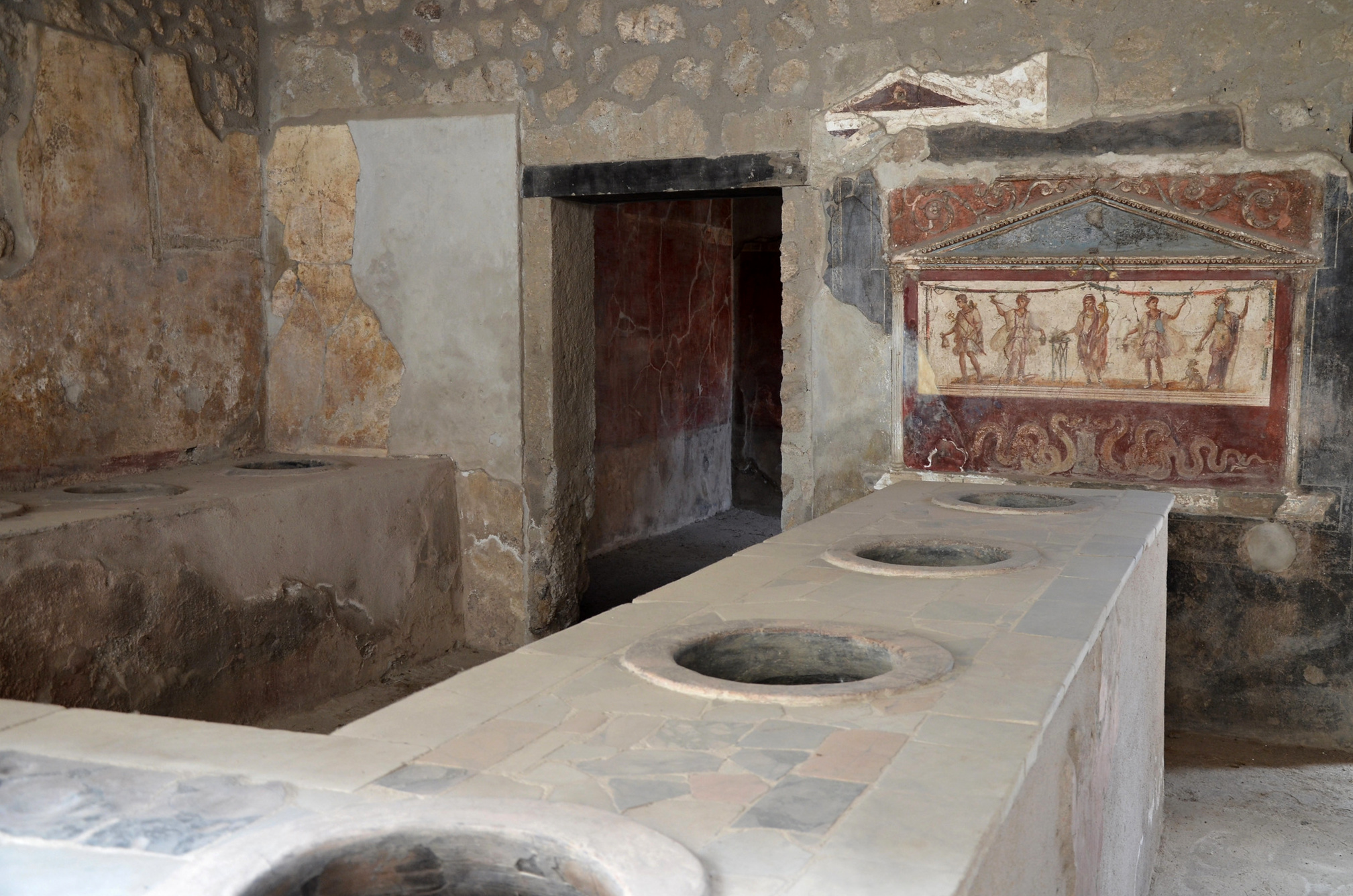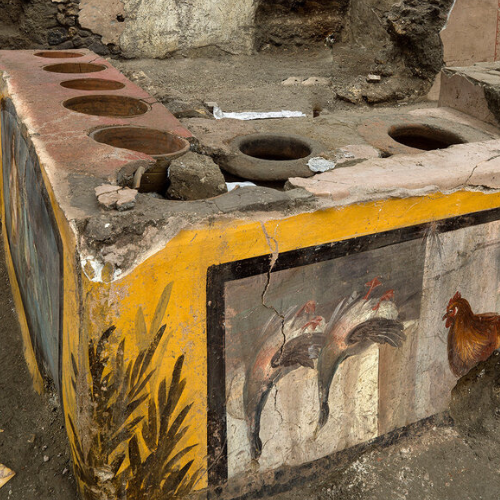The Thermopolium of Vetutius Placidus, discovered in the ancient city of Pompeii, offers a remarkable glimpse into the daily lives of Romans over two thousand years ago. Situated in a busy part of the city, this well-preserved snack bar dates back to the 1st century CE and serves as a testament to the vibrancy of Roman street culture. Catering primarily to the working class, the thermopolium provided hot food, drinks, and a space for social interaction, offering an essential service in a thriving urban center.
A Window into Ancient Roman Dining Habits
At its core, the thermopolium was a place for quick, affordable meals. With most Roman families not having the means or time to cook daily, establishments like these were crucial to the working populace. They served hot stews, wine, and other common dishes, which would have been eaten quickly on the go or enjoyed in the company of friends and fellow workers. The terracotta jars embedded into the counter are iconic features of the thermopolium. These jars were used to store and serve food and beverages, and traces of food found inside provide a glimpse into Roman culinary practices. While the types of food remain speculative, it is likely that offerings included popular dishes such as hot soups, meat stews, and even spiced wine.

Art and Advertisement: The Role of Frescoes
The frescoes that adorn the counter of the thermopolium are another fascinating element of the discovery. These vibrant, mythological scenes are not only artistic embellishments but also serve as an early form of advertising. In an era where literacy was limited, visual storytelling played a key role in attracting customers. The paintings, featuring gods and mythological tales, were likely meant to convey the establishment’s wealth and cultural sophistication. They offered an image of divine patronage, aligning the establishment with the gods, and attracting both local citizens and visitors seeking food and drink.

A Hub of Social Interaction
The thermopolium of Vetutius Placidus was more than just a place for food; it was a crossroads where social, cultural, and commercial life intersected. Much like modern-day cafes and street food markets, it served as a gathering space for people from all walks of life. Whether it was workers looking for a quick meal, tourists exploring the city, or locals sharing stories, the thermopolium played a crucial role in the social fabric of Pompeii. Public spaces like this were vital for fostering social ties, allowing people to connect, converse, and exchange news. The thermopolium, therefore, serves as a testament to how commerce and social interaction seamlessly blended in ancient Roman society.

Cultural and Historical Significance
The discovery of the Thermopolium of Vetutius Placidus is significant not only for what it reveals about Roman dining habits but also for its role in understanding the daily rhythms of Pompeii before the eruption of Mount Vesuvius. The site highlights the complexity of Roman urban life, offering invaluable insight into the daily experiences of a population that would otherwise be lost to history. As a symbol of Roman ingenuity in commerce and community, the thermopolium is a crucial piece of the puzzle that helps scholars piece together the social dynamics of ancient Pompeii.

Conclusion: A Lasting Legacy of Roman Life
Today, the Thermopolium of Vetutius Placidus remains an important archaeological site, shedding light on the bustling commercial life of Pompeii and the everyday realities of its people. From the food offerings to the artistic frescoes and the social exchanges that took place within its walls, the thermopolium is much more than a mere eating establishment; it is a snapshot of a rich, complex society. Its discovery continues to fascinate historians, offering an invaluable look into the rhythm of ancient Roman street life that still resonates today.

